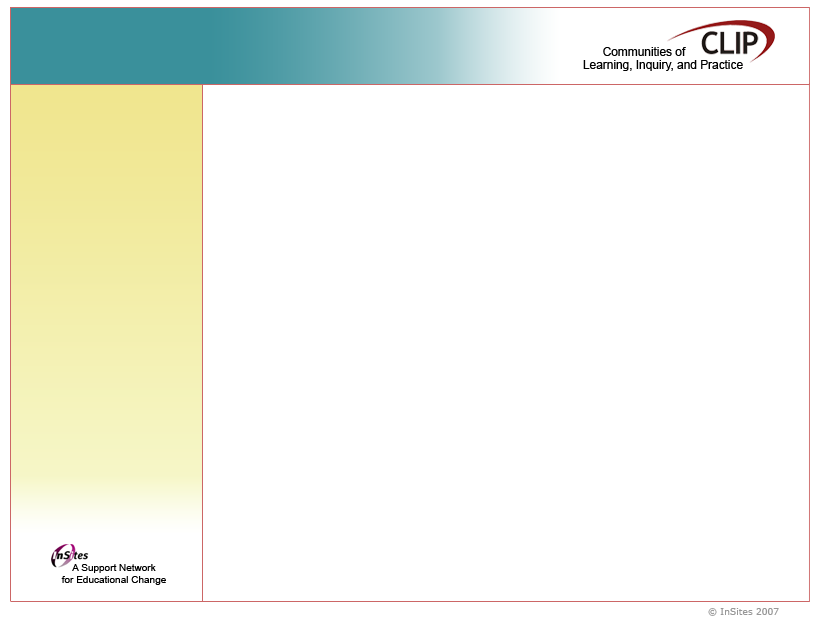When making decisions about data collection, your major tasks are to:
- identify the sources of data
- provide a safe environment for data providers
- choose methods for data collection
- set up data collection
- ensure that data collection is aligned with the Eight Guiding Principles for CLIPs
In Module 3, you developed a preliminary Inquiry Plan. Now Module 4 provides ideas about firming up your plans about the data sources and the methods of collecting the data. It provides an opportunity to consider how to protect the rights and privacy of data providers and determine the timing and location of data collection and the persons responsible for collecting the data. Throughout this phase, keep in mind how your processes align with the Eight Guiding Principles for CLIPs.
This module helps you prepare for the Fall Orientation multi-CLIP meeting. At that time your CLIP completes its data collection plan and confirms its general ideas about making meaning from the data and sharing the CLIP discoveries with others. Each CLIP leaves the meeting with an agreed-upon plan for how to proceed with its inquiry.
Developing and implementing your inquiry plan is an iterative process that involves reflection and reconsideration as new information is received, new issues are raised, or circumstances change. During your data collection activities, you may want to return to the module to use the resources it provides for various types of data collection.
By giving you information on approaches that other CLIPs have found useful, we hope to make this module one that you will return to throughout the inquiry as you discover new questions or need to find alternative paths.
|

